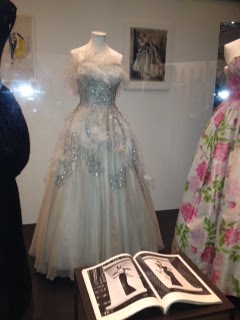Costumes! What fun. I am Natasha Bonfield, a senior embarking on my research project to uncover the dark, mysterious answers to the following questions:
How do the costumes of Indian Bollywood and the costumes of European theater influence each other? When did this relationship begin? Which style influenced the other more and for how long?
Chilling, I know. But before you get too excited, let me paint you a picture of what led me to this obscure topic.
 |
Ann Hould-Ward's amazing costumes for
Broadway's Beauty and the Beast won many
awards for bringing the show to life |
My journey in the world of costuming began when I was a youth, woefully unprepared for theater camp. At the ripe age of six, I had never been in a show before, but that did not stop me from auditioning for Dorothy in the camp’s production of Wizard of Oz. Sadly, I was given the part of Munchkin #7 instead, a background role with no lines. I accepted defeat with dignity, thankful I was not given the fate of Tree, or worse, Lighting Assistant. It was during costume fitting that I first met Jean and began my descent into the madness of costume design.
I remember Jean being impossibly old, but in reality she was probably fifty or so. She was the ruthless leader of the costume department, her domain a huge storage space covered wall to wall in costumes ranging from Rapunzel’s gowns to Hamlet’s pantaloons. For each production, Jean created a costume from scratch for each cast member--and this was an intimidating task. The theater camp had so many kids enrolled they double cast productions, meaning Jean had to make sixty individual costumes within the short two weeks of camp. I still remember my munchkin dress--green plaid with puffed sleeves and little pink and yellow bows on the hem. After I saw my costume, I was a little less mad about being snubbed for the part of Dorothy.
 |
| Beautiful costumes of Devdas, as designed by Neeta Lulla |
Fast forward twelve years, and I return to my love of costumes, but in a rather different way. Jean helped me see what costumes can do for a show--make a thrown-together cast of seven year olds seem impressive, cohesive, even good. For the next few months I will harness my passion for costuming into a study of European theatrical costumes and Bollywood costumes, a project taking me to London and India for a more in-depth research of the two styles.









_cover_art.jpg)



































